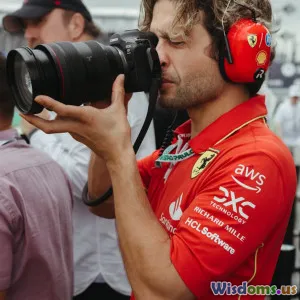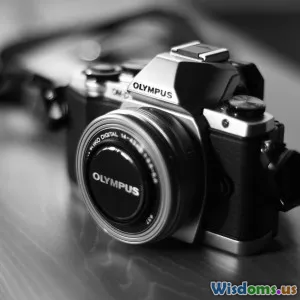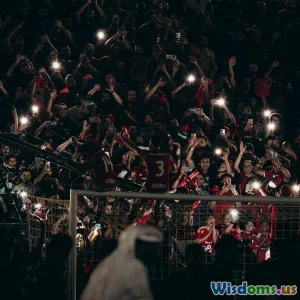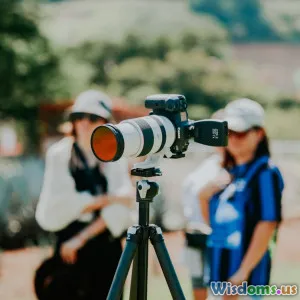
A First Timer’s Guide to Covering Major Sports Tournaments
8 min read Essential tips and insights for first-timers covering major sports tournaments successfully. (0 Reviews)
A First Timer’s Guide to Covering Major Sports Tournaments
Covering major sports tournaments is thrilling yet daunting, especially for first-timers yearning to capture electrifying moments and deliver compelling narratives. Whether you're a budding sports journalist, a photographer, or a content creator venturing into this fast-paced arena, knowing the ropes can transform your experience from overwhelming to empowering. This guide unpacks essential insights, practical preparations, and storytelling secrets to help you shine in the challenging world of sports tournament coverage.
Understanding the Terrain: The Nature of Major Sports Tournaments
Major sports tournaments—be it the FIFA World Cup, the Olympics, the Wimbledon Championships, or the NBA Finals—are complex, multifaceted events marked by intense competition and cultural significance. These tournaments often span several days or weeks, feature numerous games or matches, and attract global audiences.
What Makes It Challenging?
- Pace and unpredictability: The action can switch rapidly and surprise moments can come without warning.
- Logistical complexity: Venues are large and often crowded, with strict media protocols and security.
- Multiple stakeholders: Players, coaches, officials, organizers, fans, and sponsors all interact in a charged atmosphere.
Recognizing these dynamics equips first-timers to anticipate hurdles and respond proactively.
Preparing to Cover the Tournament
Research and Pre-Event Planning
Preparation is your strongest ally. Start with thorough research:
- Understand the sport’s rules, key teams or players, their history, and current form.
- Familiarize yourself with the tournament format and schedule.
- Study previous tournaments to glean typical challenges and strategic coverage insights.
For example, a rookie covering the Tour de France should study route profiles, notable cyclists, and terrain challenges to anticipate race developments.
Securing Credentials and Access
Official media accreditation is crucial. Apply early through the event’s media relations office, providing samples of your prior work if necessary. Different tiers of media passes offer varying access levels—from mixed zones to exclusive press conferences—knowing this helps set coverage expectations.
Gear and Technical Set-Up
Depending on your role, assemble equipment tailored for fast-action capture and mobility:
- Journalists: laptops/tablets, reliable mobile connectivity, audio recording devices.
- Photographers: fast lenses (e.g., 70-200mm f/2.8), monopods, backup batteries.
- Videographers: lightweight cameras with high frame rate capabilities and portable gimbals.
Test your gear beforehand to avoid technical glitches.
On-The-Ground Strategies
Arriving Early and Navigating the Venue
Arriving well before events begin grants time to scout prime positioning, meet key contacts, and confirm media rules in person. Large, multi-venue events require mastering transport logistics to be punctual and efficient.
Consider the 2016 Rio Olympics where journalists maneuvered not only through massive venues but also tackled unpredictable traffic and tight security zones.
Capturing the Moment: Tips for Photographers and Videographers
- Anticipate crucial moments such as game-winning shots, athlete expressions after key plays, or fan reactions.
- Use burst mode and continuous tracking autofocus to increase chances of capturing peak action.
- Experiment with angles: low, high, and wide shots add storytelling layers.
Visual storytelling experts often cite the iconic photo of Jesse Owens at the 1936 Berlin Olympics as an example of capturing both athletic excellence and historical context.
Interviewing Players and Coaches
Post-match interviews demand sensitivity and preparation:
- Prepare concise, open-ended questions to elicit insightful answers.
- Respect athletes’ emotional and physical states; sometimes candid off-the-cuff remarks reveal compelling stories.
Victoria Pendleton, former Olympic cyclist, has noted how respectful journalist interactions foster better cooperation.
Covering Unexpected Breaks and Delays
Tournaments often feature weather interruptions or technical delays. Use this downtime to:
- Conduct background research or athlete profiling.
- Network with other media professionals.
- Analyze and fact-check content to enhance accuracy.
Crafting Compelling Stories
Balancing Data With Emotion
Data-driven insights (player statistics, historical records) enrich articles, but emotional narratives make them resonate. Combining these elements provides readers with context and a human connection.
A balanced piece following the dramatic 2019 Cricket World Cup final, for instance, highlighted both the statistical improbability of England’s win and the emotional rollercoaster experienced by players and fans.
Diverse Content Formats
Leverage multiple formats to engage various audience types:
- Written articles providing analysis and narrative.
- Photo essays capturing the tournament’s atmosphere.
- Video highlights and interviews.
- Real-time social media updates for immediate engagement.
Utilizing multiple platforms enhances reach and impact.
Ethical Considerations
Maintain accuracy and fairness in reporting. Avoid sensationalism or unverified information, which can damage credibility and athlete reputations. Upholding integrity is paramount in sports journalism.
Learning From the Pros: Real-World Insights
Experienced sports journalists emphasize adaptability. As Bob Costas, renowned American sportscaster, once noted, “The best coverage comes from being prepared to handle chaos with calm.” This mindset will serve first-timers well.
Additionally, networking within media hubs at tournaments can open doors for mentorship and future opportunities.
Conclusion
Covering major sports tournaments as a first-timer might seem overwhelming, but with diligent preparation, strategic on-site actions, and a passion for storytelling, it becomes a rewarding journey. By understanding event dynamics, mastering logistics, capturing the essence of sporting drama, and maintaining ethical standards, newcomers can create content that resonates globally and leaves a lasting professional impact.
Remember, each tournament is a new story waiting to be uncovered, and your coverage can bring that story to life like never before. Embrace the challenge, equip yourself well, and step onto the field with confidence.
Additional Resources
- ‘The Essential Guide to Sports Reporting’ by Simon C. Page
- Sports Journalists’ Association: Offers resources and networking for sports media professionals
- The International Sports Press Association (AIPS) for industry updates and standards
Embarking on covering your first major sports tournament? Preparation, perseverance, and passion are your winning trio.
Rate the Post
User Reviews
Popular Posts




















